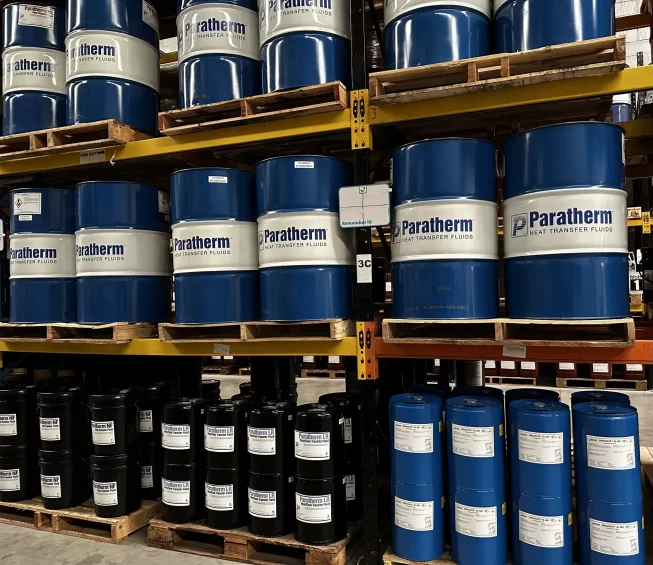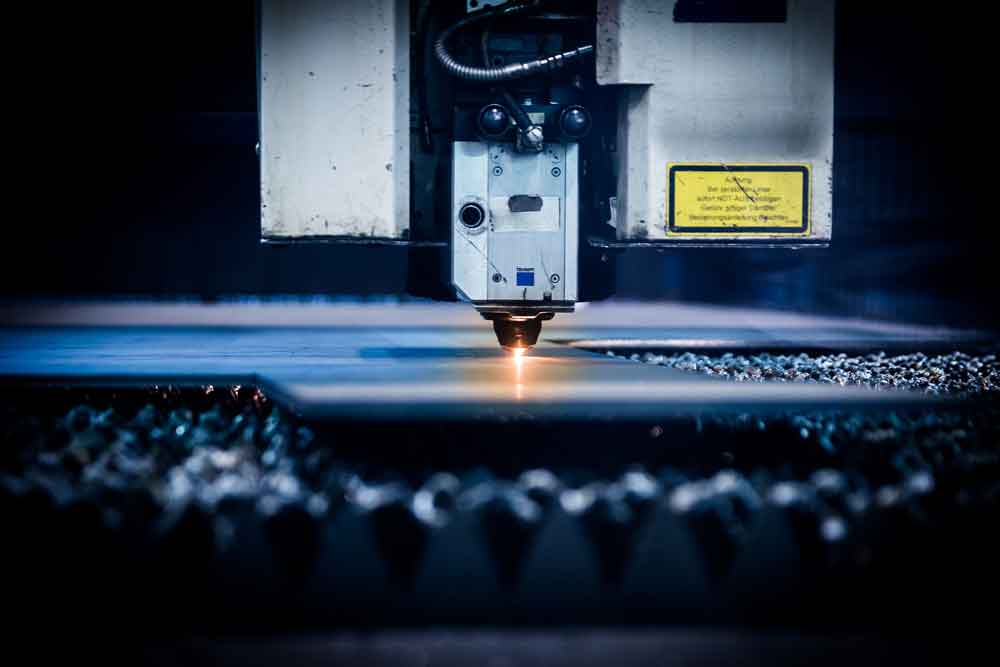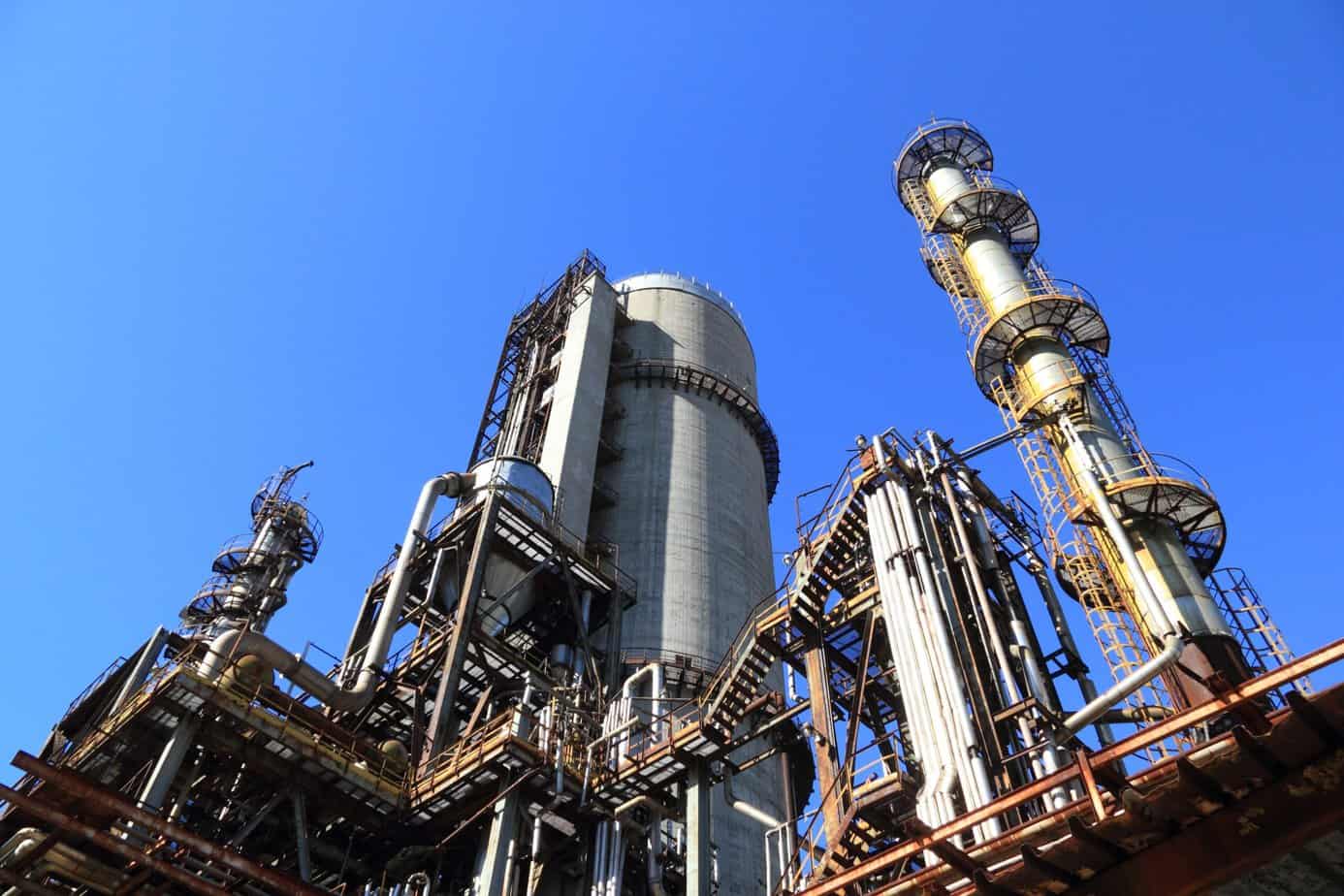
Paratherm is a specialist in engineering and manufacturing heat transfer fluids (HTFs). While the company is headquartered in Pennsylvania in the US, it serves its Continue reading The different applications of Paratherm Heat Transfer Fluids

Paratherm is a specialist in engineering and manufacturing heat transfer fluids (HTFs). While the company is headquartered in Pennsylvania in the US, it serves its Continue reading The different applications of Paratherm Heat Transfer Fluids

The primary role of a heat transfer fluid (HTF) is to relocate thermal energy efficiently from one area to another. Continue reading The advantages of using Paratherm heat transfer fluids

A heat transfer fluid’s core function is to move thermal energy efficiently from one area of a mechanical system to another, with the aim of either heating or cooling in an industrial process or application. Heat transfer fluids, such as those provided by Paratherm, are liquid coolants, with water being the most affordable and effective option available. However, while offering benefits, water also has limitations as a heat transfer fluid. As a result, engineers have devised ways to improve its basic characteristics as well as formulating alternative fluids that can cope with more intense operating conditions.
Sought-after properties in a heat transfer fluid include system compatibility, high levels of thermal conductivity, low viscosity, specific heat, low freezing point, thermal stability, low toxicity, high flash point and low corrosivity. Below, we detail some of the best heat transfer fluid used for liquid cooling processes today. These include water and deionised water, dielectric fluids and inhibited solutions of glycol and water, but which is best will depend on your application.
Among the best options for many liquid cooling applications water has high heat capacity and equally high thermal conductivity. It’s also compatible with one of the most effective heat transfer materials, copper. Water used in liquid cooling derives from various sources. For instance, tap water comes from public water treatment facilities or wells. The advantages of using tap water are availability and low cost.
Yap water is usually untreated and contains impurities. Such impurities can corrode cooling loops or block fluid channels. As a result, using quality water is advised to mitigate corrosion and optimise thermal performance.
How much water corrodes metal varies considerably according to chemical make-up. For instance, Chloride, which is corrosive is typically found in tap water. Tap water shouldn’t be utilised in liquid cooling loops when it contains over 25 Parts Per Million of chloride. Magnesium and calcium levels must also need to be considered, as they can create scale on metal parts, reducing their thermal performance.
When the tap water accessible contains high levels of impurities, salts, and minerals you can filter it or buy pre-filtered or deionized water instead. Even when water used is relatively pure and within recommended limits, adding a corrosion inhibitor like phosphate, tolyltriazole or sebacic acid is recommended for additional protection.
An alternative heat transfer fluid is deionised water that has ions like sodium, iron, calcium, copper, bromide, and chloride removed. Deionisation effectively removes the harmful salts, minerals, and other impurities behind scale formation and corrosion. Compared to tap water, deionized water offers high resistivity. It is an exceptional insulator and is used by electrical components makers to electrically isolate components. However, as its resistivity rises, water’s corrosivity also increases. As a result, using a corrosion inhibitor is vital when water is extremely pure.
While tap water meets may liquid-cooling application requirements, deionised water has electrical and chemical properties make it the best option for cooling in liquid circuits with micro-channels and application using sensitive electronics.
Its exceptionally low ion concentration gives deionised water key performance characteristics. It eradicates mineral deposits that can block coolant flow that if left unchecked can reduce operating performance and cooling efficiency of the system. It also removes any risk of electrical arcing caused by static charge build-up from the coolant circulating. Arcing damages sensitive electronics in equipment. Removing ions from water mitigates both these issues.
Deionised water is often referred to as universal solvent as it is among the most destructive solvents identified. To a certain degree it can dissolve almost anything exposed to it. As a result, extreme care must always be taken when using it as a heat transfer fluid and all materials used to construct the cooling loop must be designed to be resistant to corrosion. Many materials are incompatible with deionised water, including copper which can contaminate it. Materials which can cope with the use of deionised water include nickel and steel.
Applications where deionised water is used as a liquid coolant include medical equipment, cosmetic food processing, pharmaceutical production, lasers, laboratory instrumentation, chemical process like plating and the manufacturing of semiconductors.
Systems cooled by deionised water are critical to the dependable operation of a diverse range of equipment types. Providing that systems are properly designed to work with deionised water and maintained correctly, they can supply dependable cooling as well as leak-free operation for an extended service period.
Many specialised industries employ dielectric fluids as heat transfer fluids rather than water including those concerned with lasers, power electronics, and semiconductors. Dielectric fluids are non-conductive and as a result are the preferred choice over water when operation involve sensitive electronic systems.
Perfluorinated carbons, for example are non-flammable and non-explosive fluids that offer thermal stability over a broad range of operating temperatures. While deionised water is a non-conductive alternative, dielectrics are less corrosive making them a more suitable option for many applications. However, dielectrics are a more expensive option compared to deionised water.
Polyalphaolefin or PAO for short, is a synthetic hydrocarbon employed in many aerospace and military applications for the dielectric properties and wide operating temperature range it offers. For instance, fire control systems in modern military fighter planes are liquid cooled with PAO. While dielectric fluids can supply low risk heat transfer for sensitive electronics, they usually have a far lower thermal conductivity compared to water and water-based fluids.
The most common types of glycol-based solutions used in liquid cooling operations are propylene glycol and water or PGW for short and ethylene glycol and water (EGW). Ethylene glycol’s coveted thermal properties include its high boiling point, stability over a wide temperature range, low freezing point, thermal conductivity, and high specific heat. Additionally, it’s low viscosity reducing pumping requirements. While EGW has many sought-after physical attributes, PGW is more suitable in applications when toxicity is a concern. It is internationally recognised as safe for food processing applications and in food. It can even be used safely in an enclosed space.
While EGW has a lower thermal conductivity than water it offers freeze protection that is beneficial in shipping and in use. Ethylene glycol is commonly used in automotive antifreeze, but this product should never be added to heat exchanger or cooling system as it includes silicate-based additives for rust inhibition. These additives can become a paste coating, exchanger surfaces and reducing efficiency but silicates can also reduce the service life of pump seals substantially. Although the wrong inhibitors can result in significant issues, the correct inhibitors can stop corrosion and prolong the lifespan of a cooling loop significantly.
When the concentration of glycol within liquid cooling solution increases the heat transfer fluid’s thermal performance decreases. As a result, the best practice is to always use the lowest possible concentration of glycol needed to meet the freeze and corrosion protection a system needs.
Water quality is also important in the formulation of a glycol-based heat transfer fluid. Water must meet or exceed specific limits, even when an inhibited glycol is used. Ions within the water can result in loss of the inhibitor which can lead to issues like corrosion and fouling.
In recirculating chillers, liquid coolant, typically water will flow through the system to remove excess heat and in the process, the temperature of the fluid increases. To remain effective the coolant must be returned to the optimal temperature required by flowing through the system’s heat exchanger which is known as the evaporator.
It enables heat transfer between the liquid coolant and the refrigerant gas in the system, known as the refrigerant. The temperature of the refrigerant must be lower than the coolant’s temperature for heat to flow efficiently and for the coolant temperature to be returned to set point effectively.
The refrigerant is usually between 5°C and 10°C lower than the temperature of the coolant to enable heat to flow effectively. As a result, should the temperature set point fall below 10°C, the temperature of the refrigerant can approach, or even drop past water’s freezing point of water (0°C). If the coolant should freeze, the system evaporator can become blocked, stopping the flow of water. As water expands when it freezes, this can result in permanent damage to the heat exchanger.
By adding glycol to a coolant, it reduces the liquid’s freezing point to approximately -34°C. This effectively mitigate any risk of damage to the chiller due to freezing.
It’s worth noting that Glycol is not as effective as transferring heat as pure water. For this reason, it is preferable, when possible, to use 100 per cent water when no freezing risk exists. However, when the system’s set point is lower than 10°C, there is a definite risk of freezing and operators should add Glycol to water used as a coolant. The slight shortfall in terms of performance is a viewed as necessary trade-off that can safely allow the system to operate with a lower temperature as its set point.
All the heat transfer fluids listed have the potential to be the best solution depending on your application, industry, equipment, and operating requirements. It is vital to ensure that the heat transfer fluid you select is compatible your system, its components, and any refrigerants in use. Consult your original equipment manufacturer or consult a lubrication expert before purchasing a product to avoid harm to your system and operation.

Heat transfer fluid (HTF) systems must be maintained properly to avoid any unplanned downtime. HTF systems often remain problem-free for extended periods, but this can lead them to Continue reading Three strategies for maximising the performance of heat transfer fluids

The core function of any heat transfer fluid is to move thermal energy efficiently from one part of a system to another, either to heat or cool in an industrial process or application.
While water is Continue reading Is propylene glycol better than water for heat transfer?

Pharmaceutical processing applications require the use of a highly specialised heat transfer fluid that is specifically designed to operate for Continue reading Why is thermal fluid choice important in pharmaceutical applications?

There are many potential reasons at the root of why a heat transfer fluid may require replacement throughout its active service. For instance, heat transfer fluids can lose Continue reading Understanding why heat transfer fluids need changing

With thousands of applications for heat transfer fluids (HTF), it can be a near-impossible task for an HTF manufacturer to suggest a specific oil maintenance schedule or change interval. Continue reading How do you properly maintain and change-out heat transfer fluids?

Raw natural gas contains impurities that must be extracted before further processing. Typical impurities include carbon dioxide, water, hydrogen sulphide, ethane, methane and butane, as well as volatile organic compounds like benzene, ethylbenzene, toluene and xylene. Continue reading How to choose the correct heat transfer fluid for gas processing operations

Thermal fluid heating systems, sometimes referred to as “hot oil” systems, are a type of industrial system where a specialised heat transfer fluid is recirculated via a pump by way of a fired heat exchanger and is used in a diverse range of industrial applications. Thermal fluid systems are designed to provide heat input required for specific production processes. Continue reading What are thermal fluid systems?